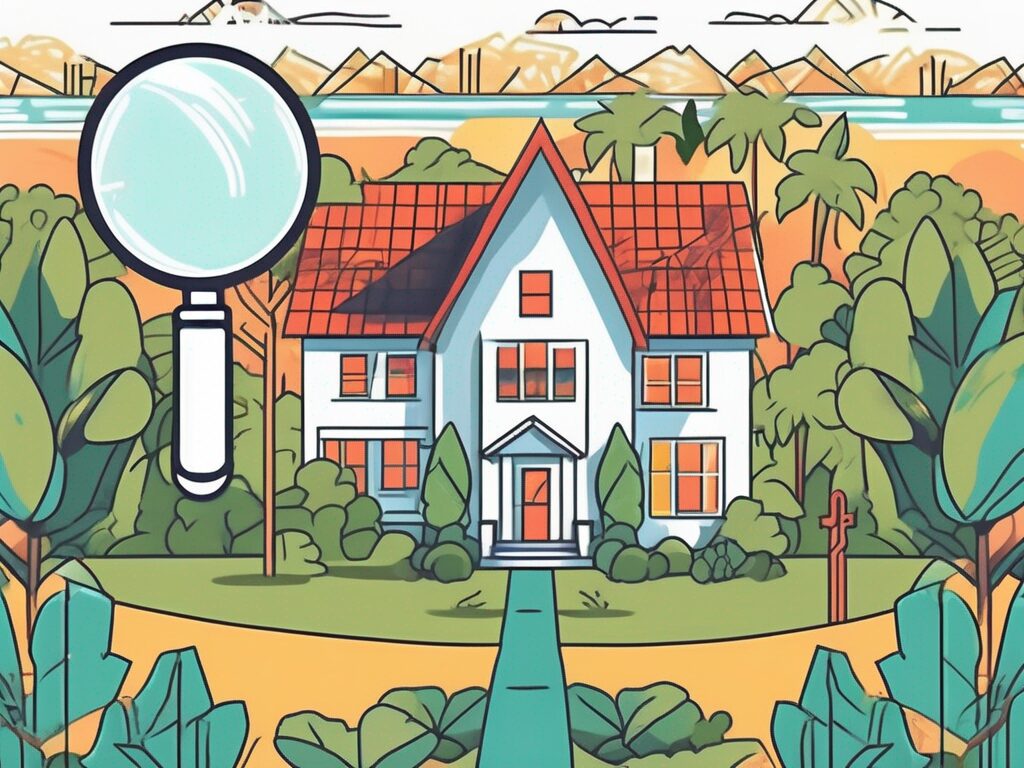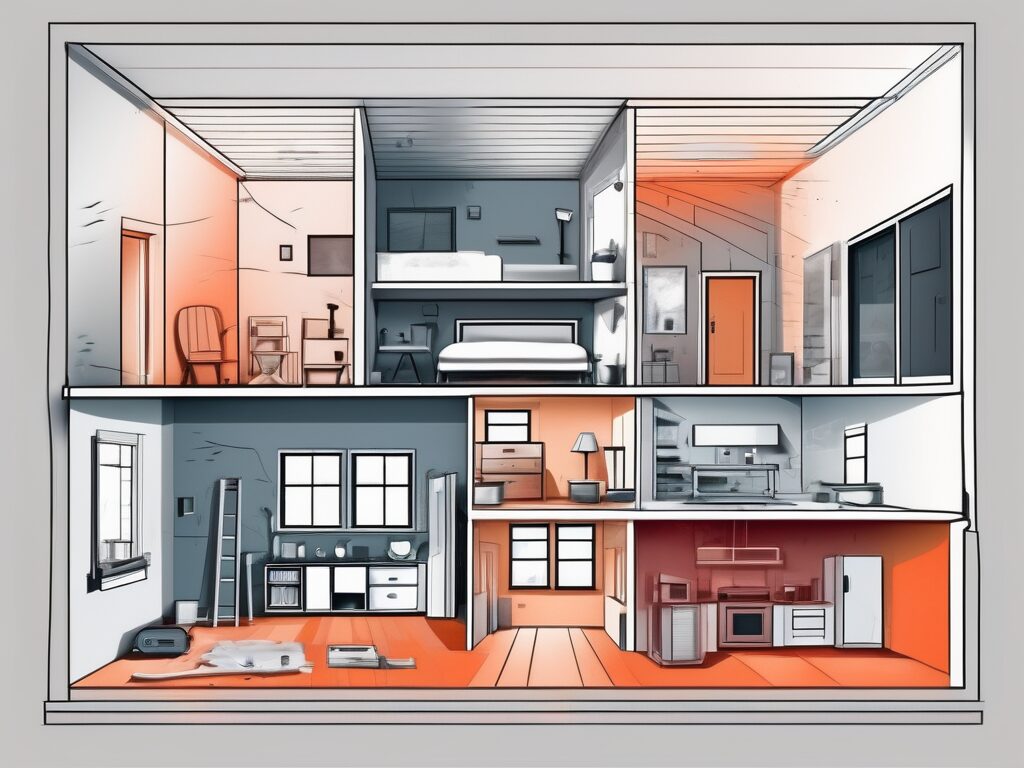
Agent A-Team or Solo Superhero? Finding the Right Real Estate Partner for Your Selling Journey in Wildwood Florida
When it comes to selling your home in Wildwood, Florida,…
January 29, 2024
Buying a new home can be one of the most significant investments in one’s life. Therefore, it’s crucial to ensure that the property is in good condition and free from any hidden defects. This is where a home inspection comes into play. In this comprehensive guide, we will take you behind the scenes of the home inspection process, giving you insight into the world of home inspectors and shedding light on what goes on inside your house during this crucial evaluation.
Have you ever wondered what it takes to be a home inspector? Let’s dive into a day in the life of these professionals who play a vital role in the real estate industry. Home inspectors, armed with knowledge and experience, embark on a journey to evaluate various aspects of a property, from its foundation to the roof and everything in between.
Each day begins with meticulous planning and preparation. Home inspectors start by reviewing the day’s appointments and gathering the necessary tools and equipment. They ensure that their knowledge is up to date with the latest building codes and regulations to provide comprehensive assessments.
As the sun rises, the home inspector sets out on their journey, ready to uncover the secrets that lie within each property they visit. They arrive at the first location, a charming suburban house with a white picket fence and a well-manicured lawn. The inspector takes a moment to appreciate the architecture and the unique character of the home before diving into their work.
When they step onto the property, the home inspector’s keen eye immediately catches any signs of wear and tear on the exterior components. They carefully examine the siding, checking for any cracks or damage that could compromise the integrity of the structure. They inspect the windows, ensuring that they open and close smoothly, and look for any signs of moisture or drafts.
Next, the home inspector directs their attention to the roof, climbing up a sturdy ladder to get a closer look. They meticulously inspect the shingles, searching for any signs of damage or missing pieces. They check the gutters, making sure they are clear of debris and properly attached to the roofline. The inspector takes note of any potential issues that may require further investigation.
After completing the exterior inspection, the home inspector moves inside the house, stepping into the foyer with a sense of curiosity. They meticulously inspect each room, starting with the living area. They check the electrical systems, ensuring that the outlets are properly grounded and that the light switches function as intended. They examine the plumbing, looking for any leaks or signs of water damage.
The home inspector moves from room to room, carefully examining each space. They check the heating and cooling systems, making sure they are in good working order. They inspect the kitchen appliances, ensuring that they are properly installed and functioning correctly. They examine the bathrooms, checking for any plumbing issues or signs of mold.
This rigorous process can take several hours, depending on the size and complexity of the property. The home inspector’s attention to detail is unwavering as they leave no stone unturned in their quest to provide a thorough assessment.
Once the inspection is complete, the home inspector organizes their findings, taking detailed notes and photographs to support their assessment. They carefully document any issues or concerns, providing clear and concise explanations for the client. They then compile all of the information into a comprehensive report that will be shared with the client.
As the sun sets on another day in the life of a home inspector, they reflect on the important role they play in the real estate industry. Their dedication to ensuring the safety and integrity of each property they inspect is vital in helping buyers make informed decisions. The world of a home inspector is one of constant learning and discovery, where no two days are ever the same.
Now that you have a glimpse into the day-to-day routine of a home inspector, let’s explore the step-by-step guide to drafting and delivering home inspection findings. Understanding this process will help you as a homeowner or prospective buyer make informed decisions based on the assessment.
After conducting an in-depth examination of the property, the home inspector begins drafting the inspection report. This report provides a comprehensive overview of the property’s condition, highlighting any areas of concern and recommending necessary repairs or improvements. It is essential to note that home inspectors are not responsible for fixing or addressing these issues but rather provide an unbiased evaluation.
The home inspection report typically includes a summary section, presenting a concise overview of the findings. This summary acts as a roadmap for the reader, giving them a quick understanding of the overall condition of the property. It highlights the most critical areas that require attention and sets the stage for the more detailed analysis to follow.
As the report progresses, it dives into more specific details, section by section, providing a comprehensive analysis of each area inspected. The inspector meticulously examines the structural integrity of the property, including the foundation, walls, roof, and other essential components. They also assess the electrical, plumbing, and HVAC systems, ensuring they meet safety standards and function properly.
In addition to the physical examination, the home inspector may also evaluate the property for potential environmental hazards, such as mold, asbestos, or radon. These invisible threats can have serious health implications, and their presence can significantly impact the value and livability of a home.
To enhance the clarity and effectiveness of the report, home inspectors often include photographs, diagrams, and even video evidence to support the written assessment. These visual aids provide a clear visual representation of the issues identified, making it easier for the client to understand the severity and urgency of each concern.
Once the report is finalized, the home inspector delivers it to the client. This is usually done in person or through a secure online portal, ensuring the privacy and confidentiality of the information. The delivery of the report is accompanied by a detailed explanation of the findings, allowing the client to ask any questions and seek further clarification, if needed.
During this explanation, the home inspector takes the time to address any concerns or confusion the client may have. They provide additional context and insights into the report, helping the client fully grasp the implications of the findings. This open and transparent communication ensures that the client is well-informed and empowered to make educated decisions regarding the property.
It is important to note that the home inspection report serves as a snapshot of the property’s condition at the time of inspection. As such, it is advisable for the client to review the report in conjunction with other relevant documents, such as disclosures from the seller and any previous inspection reports. This comprehensive approach provides a more holistic understanding of the property’s history and potential issues.
In conclusion, the process of drafting and delivering home inspection findings involves a meticulous examination of the property, followed by the creation of a detailed report. This report acts as a comprehensive guide, providing a thorough analysis of the property’s condition and highlighting any areas of concern. By understanding this process, homeowners and prospective buyers can make informed decisions and prioritize necessary repairs or improvements.
While the home inspection process is commonly associated with buyers, sellers also play a vital role in ensuring a successful evaluation. Preparing your home for inspection can help prevent surprises and potentially streamline the sale process. Here are some seller tips to help you prepare:
Consider arranging a pre-listing inspection before placing your property on the market. This proactive step allows you to identify and address any potential issues before prospective buyers conduct their inspection. By addressing these concerns in advance, you can avoid unnecessary delays or negotiations during the sales process, creating a smoother transaction for all parties involved.
During a pre-listing inspection, a licensed home inspector will thoroughly evaluate your property, identifying any structural, mechanical, or safety issues. This inspection will provide you with a comprehensive report detailing the condition of your home, giving you the opportunity to make necessary repairs or disclose any known issues to potential buyers.
By investing in a pre-listing inspection, you demonstrate transparency and confidence in your property. This can help attract more serious and qualified buyers, as they will have a clear understanding of the home’s condition from the start.
Prior to the buyer’s inspection, ensure that your home is in the best possible condition. Start by decluttering and organizing each room, allowing easy access for the inspector. A clutter-free environment not only makes the inspection process smoother but also gives the impression that your property is well-maintained and cared for.
In addition to decluttering, take the time to address minor repairs and maintenance tasks. Replace any burnt-out lightbulbs, fix leaky faucets, and repair any visible damages. These small improvements can go a long way in presenting your home in its best light during the inspection.
Moreover, provide the inspector with unrestricted access to essential areas, such as the electrical panel, attic, and crawl spaces. Clearing pathways and removing any obstructions helps expedite the inspection process and demonstrates transparency to the buyer.
Consider creating a checklist of areas that the inspector will likely examine, such as the roof, foundation, HVAC system, plumbing, and electrical systems. By addressing any potential issues in these areas beforehand, you can minimize the chances of surprises during the buyer’s inspection.
During the buyer’s inspection, it’s best for sellers to give the inspector and potential buyers ample space. This allows the inspector to work undisturbed, giving them the freedom to focus on their evaluation without feeling rushed or under scrutiny.
By staying away, you create a more comfortable environment for the inspector and potential buyers to thoroughly explore the property. This freedom of movement encourages a comprehensive inspection, ensuring that no area is overlooked or rushed through.
Additionally, the absence of the seller can encourage the buyer to ask candid questions and express any concerns openly, fostering a more honest and productive dialogue between the inspector, buyer, and real estate agents. This open communication can help address any potential issues or misunderstandings promptly, leading to a smoother negotiation and closing process.
Furthermore, by staying away during the inspection, you avoid unintentionally influencing the buyer’s perception of the property. Buyers may feel more at ease discussing potential concerns or asking probing questions when the seller is not present, allowing for a more objective evaluation of the property.
In conclusion, the home inspection process demystifies the inner workings of a property, providing valuable insight into its condition. Understanding the role of a home inspector, the process of drafting and delivering reports, and how sellers can prepare for inspections empowers both buyers and sellers alike. By being well-informed, you can make confident decisions about your investment and ensure a smooth and successful transaction.

If you want the Richr team to help you save thousands on your home just book a call.
 Book a call
Book a call